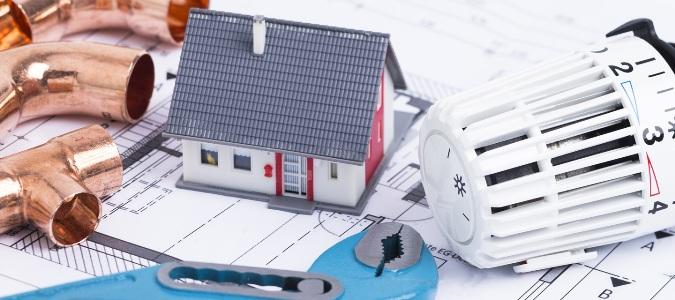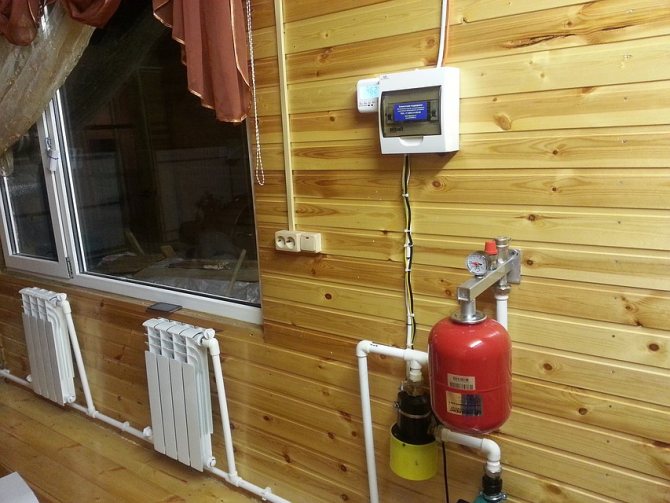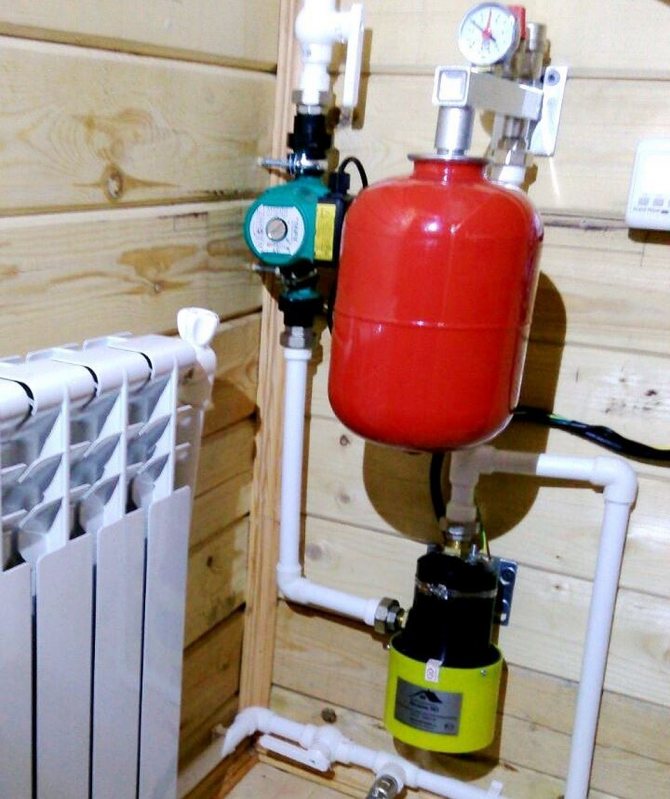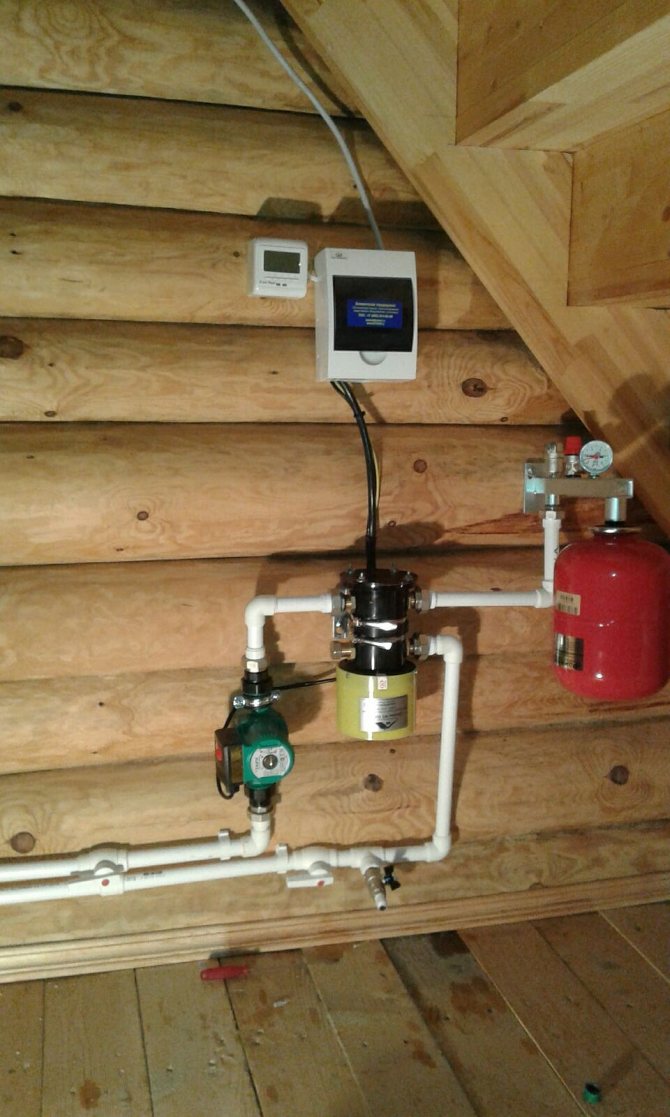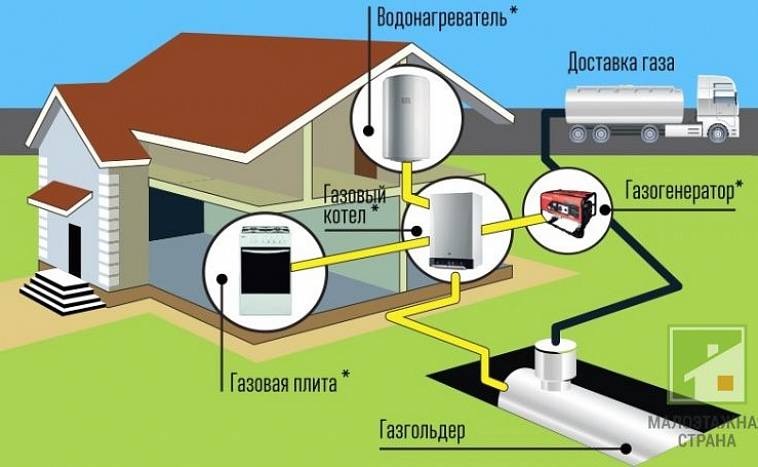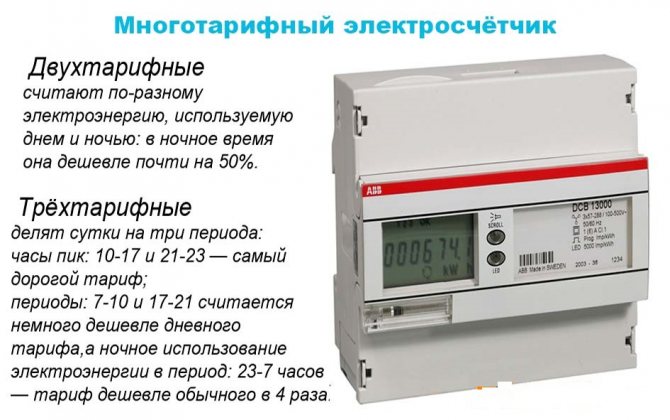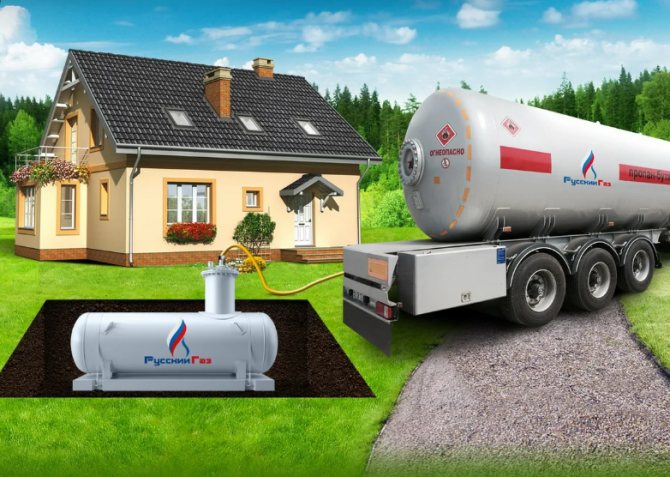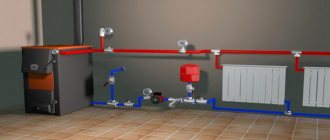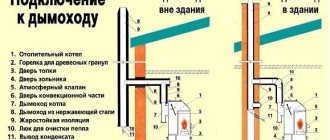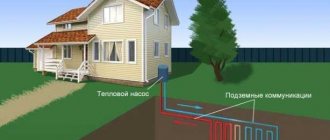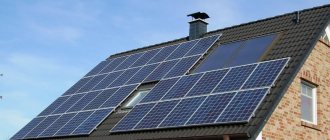The question of the device of an autonomous heating system deserves a thorough comprehensive consideration, because the costs for it make up a significant part of the budget. For a balanced determination of a suitable option, you need to determine in advance which is cheaper - gas or electricity. This often depends on many factors.
On the one hand, there are one-time costs for the installation of equipment and communications, and on the other hand, there are annual payments for gas, electricity, maintenance of devices and devices. All this can be calculated independently. The result will help you make an informed choice in favor of one of the methods of heating your home.
You will find detailed answers to really significant questions in our article. We will show you how and by what criteria the economic side of the organization of the heating system is determined. Our recommendations will help you decide which option will be more practical.
The main types of heating costs
To correctly assess the cost of heating a country house, you need to take into account all types of costs that the homeowner will have to incur.
When using gas or electricity, it is possible to organize automatic heating. This gives many advantages to people living in a country house and allows you not to waste your time on maintaining the desired indoor climate. However, automation will increase the cost of both systems.
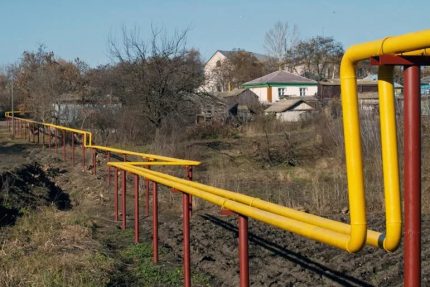
The presence of a gas pipeline near the house does not mean the ability to connect to it. To find out the answer, you need to request technical specifications from the gas supply organization. They are issued free of charge
Costs can be typified as follows:
- Capital investments for the installation of a heating system based on gas or electricity differ only in the supply of communications, the cost of the boiler and the price for its connection. The water circuit, shut-off and control valves do not depend on the type of energy carrier.
- Annual expenses for equipment repair and maintenance. This expense item is usually the smallest, but you also need to remember about it.
- Energy cost costs. They depend on the consumed volume, tariffs adopted in the region, the location of the facility (urban or suburban area) and some other factors.
Thus, the cost S (rubles) can be calculated using the following formula:
S = N + (R + E) × Twhere:
- N - capital investments;
- R is the annual cost of equipment repair;
- E is the annual cost of the energy carrier;
- T is the number of years in the billing period.
When comparing several heating options, a situation often arises when high one-time equipment costs can pay off over time due to the relative cheapness of the energy carrier.
Capital investment and equipment support
The costs of connecting an electric boiler “from scratch” are insignificant compared to equipment that runs on gas. It can be installed in any free space, even in a residential area.
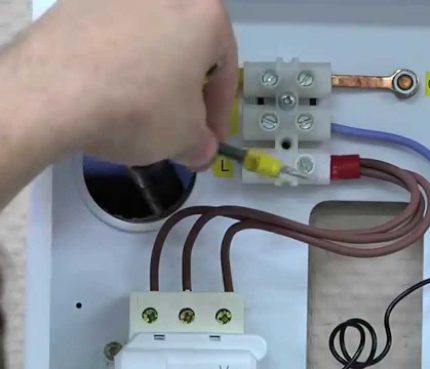

Powerful electric boilers operate from 380 V. Therefore, when installing such equipment, you will have to spend money on a three-phase connection at home
Installing gas equipment is much more difficult and expensive, as you have to follow these steps:
- Obtain technical specifications from the local gas supply organization. It is necessary to indicate the estimated gas consumption.
- Arrange a separate place for the boiler with adequate ventilation. The boiler will be handled by a specialist from the gas company before its start-up and an annual safety check.
- Lay gas communications in the premises. In order to avoid problems with acceptance, it is better for a specialist of the gas company to do this.
- Arrange a system for the removal of combustion products.
When choosing a system that runs on liquefied gas, it is necessary to organize the installation of a gas holder, since it will be very expensive to heat a house with cylinders. In addition, cylinders will often have to be refueled, so the heating process can hardly be called automatic.
For small houses and warm regions where gas consumption for heating is insignificant, several cylinders can be combined using a ramp, but this solution is also less economical than even a small-volume gas tank.
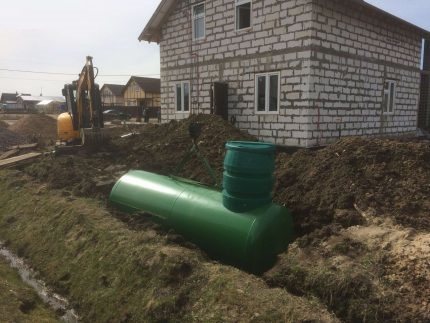

The gas tank can be installed in a pit designed on either side of the house. The communications connected to it will not be visible and will not interfere with arranging the lawn. However, it is impossible to place beds and household buildings above the equipment and pipelines - it is necessary to preserve the ability to monitor the state of the system, service and repair
Designing and connecting to the gas pipeline also requires significant funds. The price for this service depends on the region of residence and the topology of the site on which the cottage is located.
On average, the estimate, installation of the gas pipeline from the outlet to the gas consumer and the commissioning of the site can cost from 80 to 300 thousand rubles.
Estimation of the required volume of energy carrier
Many cottages were built according to individual projects using building materials of different structure and heat engineering, thermal insulation, and decoration. In addition, the climatic parameters of winter for different regions can be very different. Therefore, in the calculations of the amount of energy that will be needed to heat the house, there can be significant differences.
Calculation of the required amount of heat
Heating is designed to compensate for the heat loss of the building, which occurs for two reasons:
- loss of energy due to freezing of the perimeter of the house;
- replacement of warm air with cold air during ventilation.
In order to understand what is more profitable to heat a private house - with gas or electricity, it is not necessary to carry out high-precision calculations. An approximate estimate (± 20%) of the volume of heat loss during the winter period is sufficient to determine the difference in the final cost of the energy carrier.
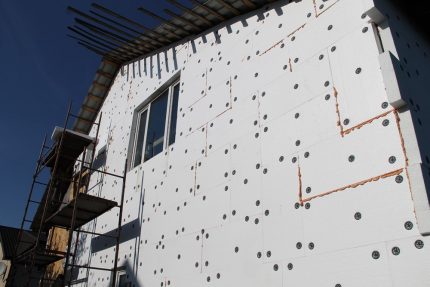

Warming a country house is a great way to save on heating. This will not reduce capital expenditures, but will reduce annual gas or electricity bills.
There are two options according to which it is possible to determine the amount of heat loss with acceptable accuracy:
- Order the calculation of this parameter from heating engineers. In this case, in order to save money, it should be mentioned that the calculations can be carried out using a simplified method.
- Carry out calculations on your own, knowing such parameters as the coefficients of resistance to heat transfer of materials at home, the area of the perimeter and roof, the volume of ventilation, the temperature difference, etc.
The obtained results of heat loss should be reduced to the standard unit of measurement - W.
Electricity and gas consumption
Instead of calculating heat loss, you can use the analogy method. If nearby (the coincidence of climatic conditions is very important) there is a building similar in geometry and material, then you can find out the volume of gas or electricity consumed by the meter readings.
In this case, we have three options:
- the heat loss of the building is known;
- there is data on the volume of gas consumed at a similar facility;
- the amount of electricity consumed for heating is known.
It is necessary to find out the volume of electricity and gas consumption for the winter period.
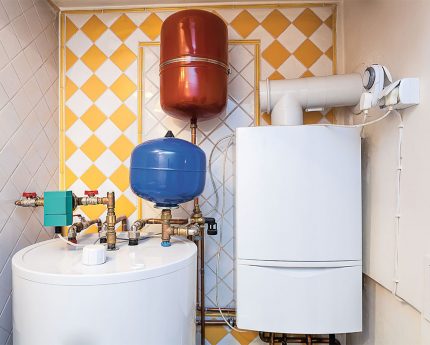

If the boiler also provides hot water supply, then the additional consumption of electricity or gas will need to be taken into account in the calculations
First of all, you need to determine the duration of the heating period E (hour). This can be done according to column number 11, table number 1 SNiP 23-01-99. To do this, you need to select the nearest settlement and multiply the number of days by 24 hours.
Since the calculations allow insignificant approximations, we will set the following constants:
- The efficiency of the electric boiler is 98%;
- The efficiency of a gas boiler is 92%;
- calorific value of natural gas is 9.3 kWh / m3;
- the calorific value of liquefied gas is 12.6 kWh / kg.
In this case, the basic transformation formulas will be as follows:
- The volume of consumed natural gas V (m3) is known. Heat loss of the building: Q = V × (9300 × 0.92) / E.
- The mass of the consumed liquefied gas V (kg) is known. Here, for the propane-butane mixture, you can use the ratio 1 kg = 1.66 l. Heat loss of the building: Q = V × (12600 × 0.92) / E.
- The amount of consumed electricity V (Wh) is known. Heat loss of the building: Q = V × 0.98 / E.
- The heat loss of the building Q is known. The required volume of natural gas: V = Q × E / (9300 × 0.92).
- The heat loss of the building Q is known. The required volume of liquefied gas: V = Q × E / (12600 × 0.92).
- The heat loss of the building Q is known. The required amount of electricity: V = Q × E / 0.98.
Calculation of heat losses of a building has another purpose - they can be used to calculate the maximum consumption of electricity and gas in the coldest five-day period of the season. This will help to select the correct boiler power and avoid overload problems.
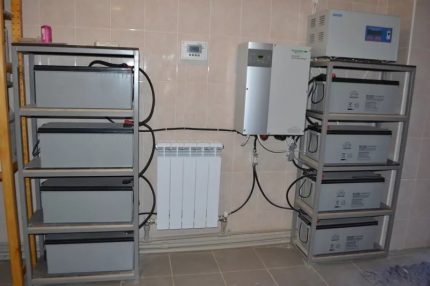

With extreme cold snaps, electricity consumption increases dramatically, which can lead to malfunctions. Therefore, you need to have a backup power supply or use heat accumulators.
When comparing the cost of gas and electric heating, the autonomous power supply system does not need to be taken into account, since in extreme frosts it can be used with any type of fuel.
Tariffs and final cost calculation
Knowing the amount of energy consumed and its cost, you can calculate the cost of heating by simple multiplication. This is true for gas, but there are some nuances for electricity.
In rural settlements, as well as in city apartments or private houses that are not connected to gas, there is a lowering coefficient of payment for electricity. To confirm the right to use the preferential tariff, it is necessary to submit a package of documents to the organization providing the supply of electricity.
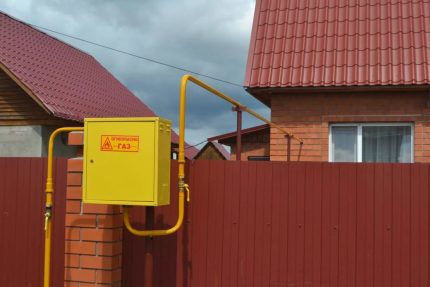

If gas is supplied to the house, but the owner does not want to use it, then this will not be the basis for applying a reduction factor
There is also another way to reduce electricity bills - to switch to a tariff differentiated by time of day. To do this, you need to apply to the sales company and purchase a multi-tariff meter.
In order for the boiler to work only at night, you will have to organize a special accumulator for the coolant. It is a well-insulated container of large capacity. This also requires some investment.
Electric heating
This method involves the use of boilers, which are divided into two types, namely floor-standing and wall-mounted.
The principle of operation is quite simple. The steel tank contains tubular electric heaters that convert electricity into heat. These elements heat the coolant, and then, thanks to the circulation of water, the building is heated.
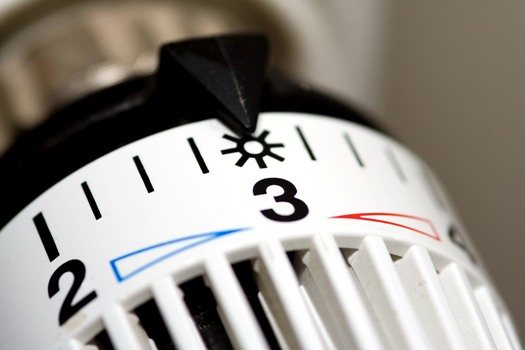

Example of calculating heating costs
Let's take as an example a cottage with an area of about 200 m2 in the vicinity of Barnaul. The average heat loss of a house made of aerated concrete with a 50 mm insulation will be about 8000 W, and the maximum - 18000 W. The duration of the heating period is 235 days or 5640 hours.
Let's calculate the capital costs for installing boilers and providing access to energy resources. When organizing home heating from electricity, the costs will be as follows:
- Connection of additional power up to 30 kW - 15 tr.
- Three-phase electric boiler Ferroli Zews 28, 28 kW - 51 tr.
- S-Tank heat accumulator of the HFWT series for 750 liters - 54 tr.
- Installation of equipment - 4 thousand rubles
Total: Ne1 = 70 thousand rubles, and taking into account the heat accumulator: Ne2 = 124 thousand rubles.
A boiler of this capacity is required if the consumer plans to heat the house at night using a differentiated tariff. When compensating for an average heat loss of 8 kW, a boiler power of 28 kW is required if the equipment will operate 7 hours a day. In extreme cold, a boiler of such power will have to be turned on during the day.
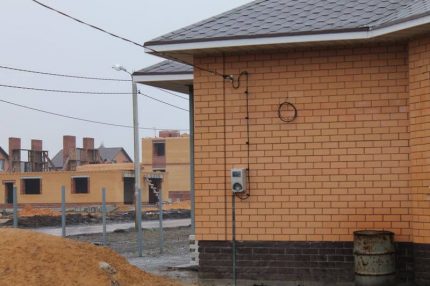

The power supply organization can connect more than 15 kW to the house only if it is technically possible. Failure may occur if networks are overloaded or worn out.
Let's calculate the capital costs for gas supply and installation of boilers operating from it:
- Technological connection of main gas. The house is classified in the first category, i.e. is located at a distance of less than 200 m from the pipe and does not require the installation of reduction gears. If this is not the case, then the price will be higher. The connection fee was 28 tr.
- Conducting a gas pipeline through the site. Preparation of a topographic plan, development of a project, its approval and registration, construction, installation and commissioning works. Payment under the work contract amounted to 85 thousand rubles.
- For liquefied gas, it is necessary to purchase and install an underground gas tank with a volume of 2.5 m3 and a pipeline to the boiler. Turnkey price - 270 thousand rubles.
- Gas boiler Viessmann WH1D272, with a capacity of 24 kW - 90 tr.
- Installation of equipment - 8 thousand rubles
- Putting the entire system into operation with the call of the Altaykraigaz inspector - 45 thousand rubles.
Total, capital costs for heating using main gas will be: Ng1 = 256 thousand rubles, and liquefied: Ng2 = 413 thousand rubles.
The cost of equipment maintenance (minor repairs and preventive maintenance) can be taken equal to 10% of its cost. However, for the supply of gas, it is necessary to conclude an agreement; you will also need to pay for the services of an annual inspection. Calling a BarnaulGorGas specialist will cost 3 thousand rubles.
Therefore, for an electric boiler, the cost of annual maintenance is: Re = 5.1 thousand rubles, and for gas equipment: Rпг = Rсг = 12 thousand rubles.
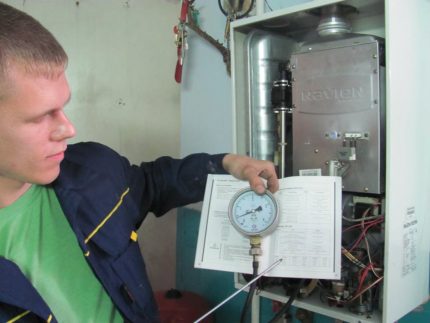

According to the Decree of the Government of the Russian Federation No. 410 of May 14, 2013, mandatory annual maintenance of indoor gas equipment can be carried out by organizations entered in a special register
Let's calculate the amount of energy required for the winter period:
- electricity: Ve = 46 mW × h;
- natural gas: Vпг = 5273 m3;
- liquefied gas: Vcg = 3892 kg.
Energy costs for the entire winter period will be as follows:
- Electricity. With a single-tariff connection in rural areas, 1 kWh costs 3.2 rubles. Ee1 = 46000 × 3.2 = 147.2 tr.
- Electricity. With a two-tariff connection in rural areas, 1 kWh = 2.07 rubles. Ee2 = 46000 × 2.07 = 95.2 tr.
- Natural gas. Its cost is 6.45 r / m3. Epg = 5273 × 6.45 = 34 tr.
- Liquefied gas. Its cost will be 36.1 r / kg. Eсг = 3892 × 36.1 = 140.5 tr.
The price for liquefied gas is given taking into account two fillings of a 2.5 m3 gas tank.
After these calculations, the heating cost equation will take the form:
- for electricity at the general rate: Se1 = 70 + 152.3 × T;
- for electricity at a two-zone tariff: Se2 = 124 + 100.3 × T;
- for natural gas: Sпг = 256 + 46 × T;
- for liquefied gas: Scg = 413 + 152.5 × T.
From these figures, you can get an idea of how profitable a particular type of fuel is.
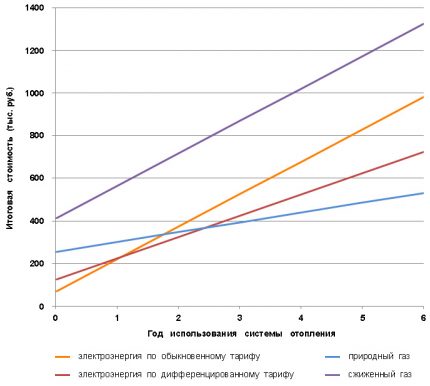

The dynamics of heating costs can be most easily traced by the graph of investment growth versus time. The equations are simple and linear
For this particular facility, it can be concluded that the best heating method is using mains gas. Within three years, it will be the most economical type of heating.
Installation of an electric boiler is cheaper and faster, as it requires fewer approvals. But subsequently, paying for electricity will lead to more serious expenses than using main gas. The two-tariff system will justify itself in the first year.
Heating on the basis of liquefied gas is absolutely unprofitable economically. It can be used only if there is no technical possibility of connecting both to the main gas and to electricity with a capacity of 30 kW or more.
You are master
The answer to the question of which heating to choose for a private house - gas and electric - is not always unambiguous, and depends on many factors.In this article, we will consider the advantages and disadvantages of these types of heating, based on personal experience. In my private house, I originally installed electric heating, simply because there was no gas connection. Four years later, the gas was pulled down the street, I redid the heating system and connected the gas. Heating on solid or liquid fuel, I did not consider, since such heating is quite inconvenient to use, and requires a lot of time to be devoted to maintenance. If there is no opportunity or desire to devote a lot of time to the maintenance of the heating system, and as they say “turn on and forget”, only occasionally observe the work, then the best options are gas or electric heating.
When planning heating, it is necessary to immediately foresee how hot water will be heated and what kind of stove will be, gas or electric. The answer seems obvious and logical. If the heating is gas, then water heating can be provided from a double-circuit heating boiler, and the stove can be supplied with a gas one. But, this is not always the right decision. For example, after talking with other homeowners, I found out that if you constantly heat water for use with a special double-circuit gas boiler, then the boiler will not work for a long time. Already, after about a year, problems begin with the boiler, it has to be repaired, descaled, changed heat exchangers, etc. And after about 2-3 years, the boiler becomes unusable. Especially often gas boilers fail if the water quality in the system is imperfect. Replacing the boiler is a rather expensive undertaking, besides, if the boiler “stands up” during severe frosts, then there is a possibility to defrost the heating system, if the boiler is not replaced promptly. Therefore, it makes sense to heat water for use using an electric storage water heater. In this case, the heating boiler will operate with the same volume of water in the system, without a constant flow of water from the water supply system, which significantly increases the operating life of the heating boiler. Installing a gas stove, in the presence of gas heating, is also not always the best solution. Firstly, an electric stove is safer than a gas stove, since no open fire is used, this is especially true if small children live in the house. Secondly, the installation of a gas stove can be difficult due to the need to bring a gas pipe into the kitchen. Therefore, given the fact that modern electric cookers have a fairly high efficiency, the possibility of installing an electric cooker can be considered, even with a gas connection.
Electric heating connection does not require a special permit. But it is necessary that in the technical conditions, sufficient power was allocated. As a rule, at the moment, power grid companies provide up to 15 kW without any problems. That will be quite enough for the needs of consumption and electric heating of the house, up to about 150 m². If necessary, you can request more power, but this will cost more and will be allocated if technically feasible. Also, if you are planning to connect electric heating, it is best to make a three-phase connection at home. You can read about the advantages of a three-phase connection in this article.
In most cases, the initial cost of connecting electric heating will be significantly lower than the cost of connecting gas heating. So the cost of an electric boiler is an order of magnitude less than the cost of a gas boiler. To connect an electric boiler, it may be necessary to redo the electrical connection at home, replace the lead-in cable, increase the power of the circuit breakers, lay a separate cable from the input board to the electric boiler.But even if you have to redo something, the cost of the electrical connection will be cheaper than the gas connection.
The advantages of electric heating include the fact that electric boilers are smaller than gas boilers. For example, one of the most efficient, electrode-type electric boiler, is one of the smallest heating boilers, and practically does not take up space, but cuts into the pipe of the heating system. It is much easier to bring the electric cable to the boiler than to lay a gas pipe. Also, an electric boiler does not require the connection of a chimney pipe, which greatly simplifies the choice of a place for installing the boiler.
The most serious drawback of electric heating is the significantly high payments for electricity spent on heating. This disadvantage, as a rule, covers all the advantages of electric heating.
The main disadvantage of gas heating is the high cost of connecting gas. If a gas pipe does not pass along your street, then the cost of supplying gas from neighboring streets can be simply enormous. The fact is that the gas supplying organization is not obliged to supply the gas pipe to your house for free, even if there is gas on the next street. Unlike gas supply, the energy supplying organization is required to bring an electric line to your house if your house is less than 300 meters in the city or 500 meters in the countryside from the existing power line, and you will pay only 550 rubles for this. The gas supplying organization can supply the gas pipe for free only if your street is included in the gasification plan. It is impossible to influence when your street will be included in the gasification plan and whether it will be included at all. And pulling a gas pipe down the street at your own expense is quite expensive, even in a joint effort with neighbors, especially if the distance to the existing gas network is considerable. Therefore, land plots for building a house, with gas pipes laid down the street, are much more expensive than non-gasified plots. But even if the pipe runs along your street, then it will be quite expensive to connect a gas pipe to a heating boiler. The specific cost can be found in the gas supply organization. For me personally, to start a pipe from an underground pipe (the pipe was laid down the street for free) to the boiler room, with the design of projects (external and internal gas supply), in 2014 cost about 45,000 rubles.
To install a gas boiler, it is best to set aside a separate room. It must be well ventilated. It is necessary to provide for the possibility of supplying a gas pipe and a chimney pipe to the installation site of the boiler. If the boiler is volatile, then it is necessary to connect an electrical outlet. The power supply to the boiler must be connected through an electrical voltage stabilizer. To eliminate the impact of power surges, in the network, on the boiler electronics. The energy dependence of the boiler can be reduced by using a UPS (uninterruptible power supply), which can ensure the operation of the boiler even after a power outage. Modern gas boilers, small enough. Recently, wall-mounted gas boilers are preferably installed. They are installed on the wall, if the net has a combustible material, then a non-combustible paronite gasket is preliminarily attached to the wall. The chimney pipe of such boilers is simply led out through the wall and does not require the installation of an additional pipe to raise the smoke emission above the roof. The cost of a gas boiler depends on the type, power, brand and may be several times higher than the cost of an electric boiler. Gas boilers also, as a rule, more often than electric ones, fail.
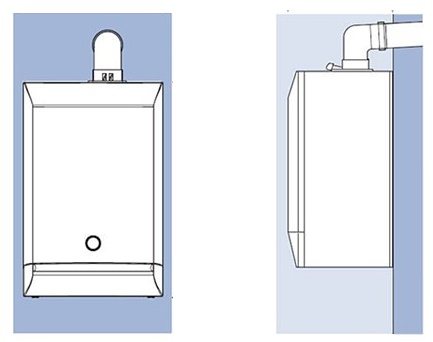

Installing a gas boiler on the wall
But despite the high cost and disadvantages, gas heating is the most economical due to the low cost of gas, compared to electricity. For example, I will give the cost of electric and gas heating. The costs are approximate, based on personal experience heating a 130 m² private house.
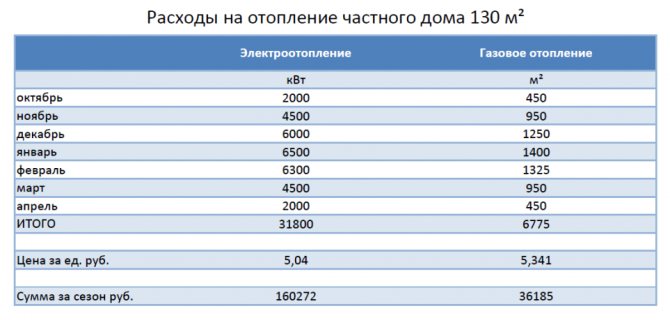

As can be seen from the table, the cost of electric heating is much higher than that of gas heating. Even if, in this season, it is necessary to replace the gas boiler, all the same, the cost of gas will be significantly less than the cost of electricity.
Unfortunately, owners of private houses do not always have the technical ability to connect gas, so they have to opt for more expensive electric heating. If initially, when building a house, you already assume the installation of electric heating, then pay special attention to the effective insulation of the house. It will make sense to spend more money on the use of insulation, energy-efficient windows, but in the future to save on utility bills.
Conclusions and useful video on the topic
Works on gas supply to the house and their cost on the example of a house in the Perm Territory:
About tariffs for the use of electricity for heating a house located in the city. Legal and technological nuances:
The use of gas and electricity to heat a house has its own characteristics. Electric heating equipment is easier and faster to connect, and natural gas is cheaper as a fuel. To determine the best economic model for heating, you need to carry out calculations for a specific facility and draw up a financial cost schedule.
Would you like to share your own opinion on the most rational and practical heating system? Do you have any useful information on the topic of the article that is worth sharing with your site visitors? Please leave comments in the block form below, ask questions, post photos.
Pros of gas heating
This method of heating a room will certainly have certain advantages. Namely:
- Cheapness. The use of this type of fuel is beneficial from an economic point of view. Gas heating is cheaper than electricity. This is why the initial cost pays off as the equipment is used.
- Environmental friendliness. Experts assure that the combustion of gas does not generate harmful substances that can pollute the environment.
